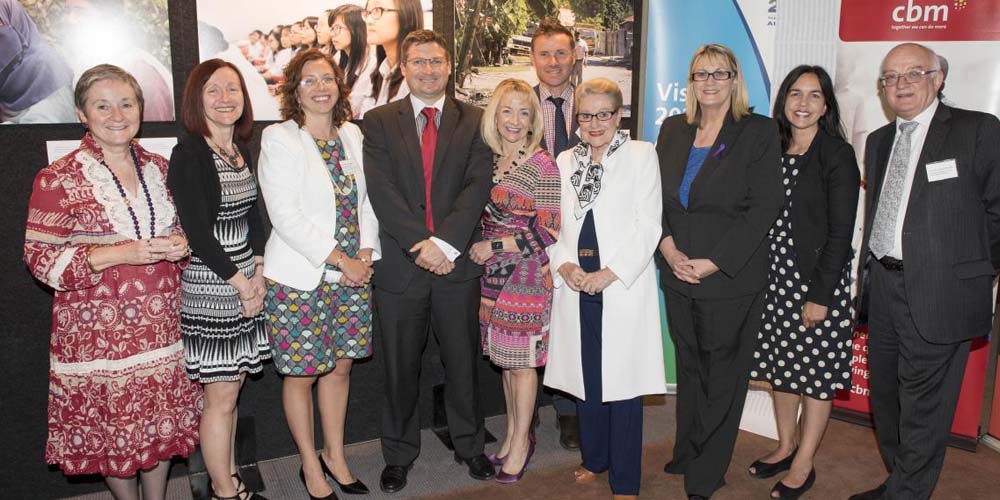Join a powerful, unprecedented alliance for better eye health for all.
Join IAPB-
Choose an alternate language here
When I stepped down as CEO of Vision 2020 Australia four years ago, I reflected on all that had been achieved through collaborative action over the past decade and was proud the organisation was recognised by the Australian Parliament as the credible and respected national peak body for eye health and vision care.
That was not the case back in October 2004 when I first joined. In fact, my initial meeting with the Australian Government was a wake-up call in many ways. It was clear that if Vision 2020 Australia was to be effective and lead advocacy efforts on behalf of its members, we needed to gain the respect of not just the government, but the many parties and independent members of the Australian Parliament. There was a long road ahead.
The first step was to strengthen collaboration and unity among Vision 2020 Australia members so we could speak with one voice and become a force to be reckoned with. We set up mechanisms for sharing information, debating issues and, importantly, reaching consensus on key policy positions. Within a relatively short period we were in a position to demonstrate the strength of collaboration within the Australian eye health and vision care sector.
Next we needed a way to easily access key policy decision-makers and influencers so we could raise awareness of eye health and build support for priority issues identified by the sector. In addition to the usual meetings with individual Ministers and Members of Parliament, we wanted to find a way to build bi-partisan support across the Australian Parliament to ensure we didn’t fall victim to electoral changes in government, providing greater sustainability for eye health policy and funding.

The first task was to identify two politicians from the Government and Opposition who would be prepared to be co-Chairs of the Group and inspire their political colleagues to join the group – this took some time. However, it was well worth the effort! After nearly two years of lobbying, in 2008, the Parliamentary Friends Group was formed and we held our first event – a dinner in Parliament House Canberra, Australia. Right from the beginning it was clear this advocacy initiative was a huge success and over the years gained a reputation around Parliament House as the event to attend! These events continue to be a major drawcard for Australian Parliamentarians, government officials and representatives of the eye health and vision care sector.
While formats for the bi-annual events are mixed up to keep them interesting, they always enable Ministers, Parliamentarians, and government officials to mingle with leaders in the eye health sector in an informal way over breakfast, cocktails or dinner. Each event has a theme bringing guest speakers to Parliament House to inform, move and motivate decision-makers and influencers to take action. They connect everyone in a non-partisan way around the issues that matter and bring to life the stories behind the data showcasing eye health experts, service providers and beneficiaries.
Building on our strong bi-partisan support, in the lead up to Federal Elections, we would hold two Vision Summits – one with Government and the other with the Opposition. Key Ministers or Shadow Ministers were invited to meet with leaders in the Australian eye health and vision care sector. It provided us with the opportunity to present an Election Proposal and seek commitments from both the Government and Opposition at a time when political parties are keen to make promises in return for support. The key to success is to ensure you secure commitments from both sides of politics.
While there is often a tendency to lean towards one or another political party for philosophical reasons, to be truly effective as an advocacy body in the longer term, it is critical to not align with any particular political party. This approach has delivered results for Vision 2020 Australia, its members and their beneficiaries.
Of course, it’s clear the success of Vision 2020 Australia is due to the shared vision and determination of many people. But, if I had to pick three words to describe what actions contributed most to this success they would be influence, unity and message. It might sound simple, but the truth is we made sure we influenced the right decision-makers; we brought the sector together and demonstrated a united front; and we always knew what we wanted to achieve and were clear about what we were asking for. Undeniably, a key pillar of Vision 2020 Australia’s success is the bi-partisan support it has nurtured over many years which continues today.
I was, and still am, motivated by being able to inspire policy makers and people of influence to take action. I am in awe of the committed professionals who passionately strive to restore sight and improve the lives of people living with blindness and low vision; and feel very privileged to have met some of the people whose lives have been transformed by the outcomes of our successful advocacy.
Under the leadership of CEO, Judith Abbott, Vision 2020 Australia continues to go from strength to strength, solidifying its bi-partisan support and strengthening collaboration among its members and across the health and broader sectors.
My commitment to, and support of Vision 2020 Australia’s ongoing success is resolute. I’m very proud to have been a part of the growth and development of this small, but highly effective organisation. Vision 2020 Australia brings people together and fosters partnerships and collaboration. No other organisation is better placed to continue this critical role in Australia as we face the decade ahead.